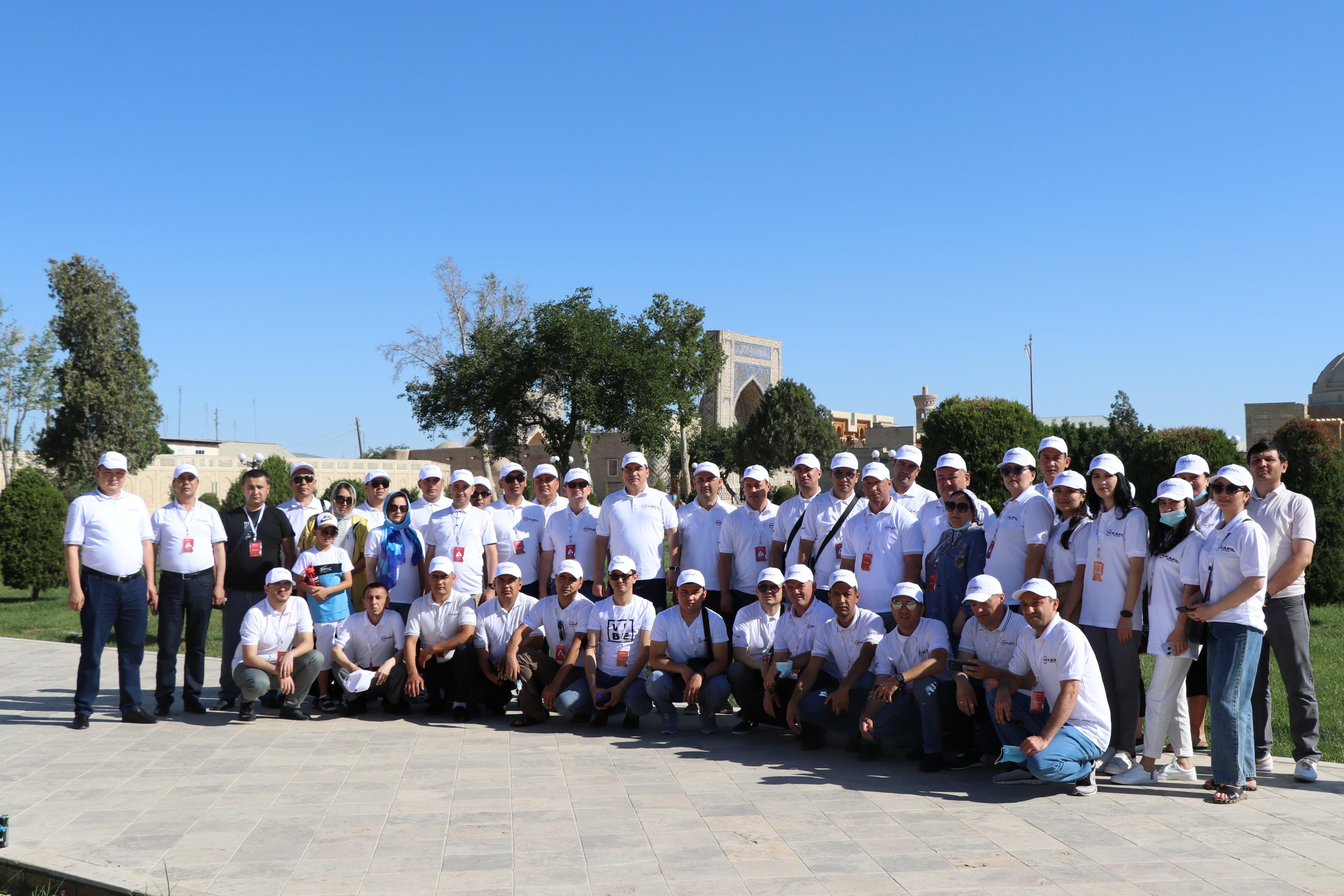


Bukhara is the birthplace of the seven great Sufis of the Naqshbandi Brotherhood. Great representatives of Sufism lived here, led religious and social life, who contributed to the formation and prosperity of the Blessed Bukhara, the education of spirituality, and the raising of the emotional spirit. There are preserved feasts-Muslim shrines, burial places of Sufi saints.
On May 21, the KAFIL SUG'URTA team visited the 7 Pirs sanctuary in Bukhara, starting with a blessed visit to the Mausoleum of Khoja Abdalkhalik al Gijduvani, the spiritual mentor who paved the path of the Naqshbandi teachings. Abdalkhalik al Gijduvani is connected by the spiritual links of the tenth generation of the prophet.
In the recent past, the shrine was abandoned. In order for the mausoleum to acquire today's exemplary appearance, it was necessary to survive several generations. Now the "Mausoleum of Abdalkhalik al Gijduvani" as a part of the Ancient East, shows the connection of the earth and the sky.
The mausoleum of Haja Muhammad Arif ar-Rivgariy is the burial place of Murshid Haji Arif Rivgariy. Born in the village of Revgar in the middle of the 12th century, he was a disciple of the great Murshid Abdulkhalik Gijduvani. After the death of the great teacher, he received permission to be a spiritual mentor for others. Until the end of his life, he was active in religious activities. He liked to say dhikr aloud. There is a legend that Haji Arif lived for 150 years. He was buried in the village of Shafirkan in the Bukhara region.
The mausoleum of Hajj Mahmud Anjir-Fagnaviy is the burial place of the greatest Sufi, a spiritual teacher. Born near the city of Vabkent. At the beginning of his career, he was a craftsman and carpenter. After completing his apprenticeship, he became a murshid. Mahmoud Incir Fagnavi was the first to pronounce dhikr loudly, believing that " the sleepers should wake up." He was buried in his native village of Anzhirbog.
The Khoja Ali Ramitani Memorial Complex is the burial place of the most famous spiritual master of the Hajagan Sufi school. Among the people, the Sufi was called "Azizkhon" – the venerable sheikh. He was born at the end of the XII century in the city of Ramitan. Professionally engaged in weaving throughout his life. He was a student of Mahmoud Fagnavi. Ali Ramitani succeeded in the impossible-he converted the Mongols to the Islamic faith. He helped restore scattered lands after the Mongol invasion, and was engaged in healing. Legend has it that the Sufi was able to read people's minds and answer a question before voicing it aloud. Throughout his long and righteous life, he had many disciples, among whom were his sons. He bequeathed his younger son, Haj Ibrahim, to continue his teaching.
The Khoja Muhammad Bobo Samosiy Memorial Complex is the burial place of the famous Sufi, a follower of Haji Ali Ramitani. Haja Sammasi made an invaluable contribution to the development of Sufism, foretold the birth of a great personality, the creator Bahautdin Muhammad Naqshbandi. Legend has it that once passing by Bahautdin's native village of Kasri-Hinduwane, the mystic had an epiphany. He said that the greatest son of Sufism and enlightenment will be born in this place, and the place will be called "The Village of the Enlightened".
The teacher died at the age of 95 in 1354. The holy burial place is located in the village of Simas, Romitansky district. Here they built a mausoleum, a mosque, a well and a beautiful garden – all that this non-trivial person personified with his teachings.
The Hajj Sayyid Amir Kulal Bukhari Memorial Complex is the burial place of Sayyid Amir Kulal. Already during his lifetime, he had the nickname Kalon, which means "Great". Professionally engaged in pottery. Fame overtook him long before he became a Great Teacher. He was a famous talented potter.
Sayyid Amir Kulal was a spiritual authority, had more than a hundred followers, among whom was Bahautdin Muhammad Naqshbandi. He introduced Naqshbandi to the basics of Sufism, the correct reading of dhikr, and the traditions of the mystical path of Hajagan. It is believed that the teacher was introduced to the Great Disciple by Sheikh Haja Sammasi, who even then understood that he trusted the most valuable and dearly spiritual son. Sayyid Amir Kulal was buried in 1370 in his native village of Suhar.
The Bahautdin Naqshbandi Complex (XVI c.) is a unique memorial complex located 12 km from Bukhara. The complex was built in honor of the cult "Teacher of Sufism" Bahautdin Naqshbandi.
The Bahautdina Naqshbandi complex has a museum, which presents interesting exhibits and information related to the life and work of this amazing person.